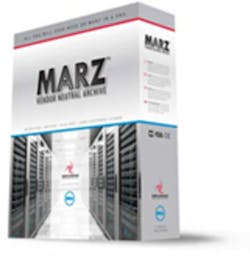Data Warehousing
Three things healthcare CIOs should know about data warehouses
For the past decade or so, healthcare technology has taken off on a breathtaking sprint to integrate electronic health records and automate essential operational information systems. Today, the goal for most health system CIOs is to produce an analytics capability that will ensure survival in the new healthcare reform environment, including value-based purchasing.
In the race of IT initiatives, it’s easy to lose sight of priorities. Building an enterprise-wide analytics platform should be one of these priorities. It will be a challenge for healthcare CIOs, but it’s a challenge organizations can meet with the aid of a data warehouse.
Here are three things CIOs should know about data warehouses and the imperative that technology brings:
- BI/data analytics will be one of, if not the most, compelling IT initiatives in healthcare during the coming decade. Getting started now on a foundational platform will be critical to getting out and staying out in front of this emerging, critical business imperative.
- There are critically important reasons why your organization needs an enterprise-wide solution to its analytics needs (as opposed to numerous, single-point solutions). Simplicity in architecture, coupled with lessened resource consumption amid constantly expanding analytics demands, dictates that CIOs implement an enterprise data warehouse (EDW). An EDW minimizes redundancy and isolates reporting to a single source of truth.
- Achieving early ROI necessitates a late-binding (highly flexible) data warehousing environment, coupled with a “cleanse your data as you go” operating philosophy. Early ROI will ensure on-going organizational support for the EDW and will facilitate organizational compliance to an enterprise-centric solution.
While CIO at Intermountain Healthcare for more than two decades, I witnessed the automation of a remarkable number of systems and processes. I also realized the need for a flexible EDW fed by operational systems and coupled with advanced analytical tools. This analytics approach yielded insights and allowed us to harvest improvement knowledge. Sharing this knowledge system-wide with clinicians and management, and imbedding this knowledge back into operational systems, took us down a path of real and documented cost, quality and access improvement.
While healthcare technology and the analytics imperatives of healthcare reform advance into the future, CIOs with the foresight to start their data warehouse initiatives sooner, rather than later, will position their healthcare organizations for a successful, efficient transition to value-based care.
Larry Grandia led IT functions for Intermountain Healthcare, Inc. for more than two decades and was Chief Technology Officer of Premier, Inc. before his retirement in 2011. He currently serves on the Board of Directors of Health Catalyst.
Security
Nine key cyber threats identified in Verizon data breach report
The DBIR identifies the nine threat patterns as: miscellaneous errors such as sending an email to the wrong person; crimeware (various malware aimed at gaining control of systems); insider/privilege misuse; physical theft/loss; Web app attacks; denial of service attacks; cyber espionage; point-of-sale intrusions; and payment card skimmers.
In the healthcare sector, 46 percent of security incidents were the result of lost or stolen assets, with physical theft and loss of assets occurring most often in the office – not from personal vehicles or homes. Insider misuse was the second-biggest threat.
Other key findings in the report include:
- Cyber espionage is up again in the 2014 report, representing a more than three-fold increase compared with the 2013 report, with 511 incidents. (This is partially due to a bigger dataset.) In addition, these attacks were found to be the most complex and diverse, with a long list of threat patterns. As it did last year, China still leads as the site of the most cyber espionage activity; but the other regions of the world are represented, including Eastern Europe with more than 20 percent.
- For the first time, the report examines distributed denial of service (DDoS) attacks, which are attacks intended to compromise the availability of networks and systems so that, for example, a website is rendered useless. They are common to the financial services, retail, professional, information and public sector industries. The report points out that DDoS attacks have grown stronger year over year for the past three years.
- The use of stolen and/or misused credentials (user name/passwords) continues to be the No. 1 way to gain access to information. Two out of three breaches exploit weak or stolen passwords, making a case for strong two-factor authentication.
- While external attacks still outweigh insider attacks, insider attacks are up, especially with regard to stolen intellectual property. The report points out that 85 percent of insider and privilege-abuse attacks used the corporate LAN, and 22 percent took advantage of physical access.
Verizon analyzed more than 63,000 security incidents and more than 1,300 confirmed breaches in 2013 to compile this year’s report. Get the full report at www.verizonenterprise.com/DBIR/2014/.
Solutions
Hospital integrates PACS, VNA
Near-instant data replication, minimal downtime
Double-Take Availability provides complete flexibility when designing a healthcare data recovery plan. This is the market’s first real-time high-availability (HA) and disaster recovery (DR) solution to offer agentless and agent-based protection options for physical, virtual and cloud servers. This software protects critical data and leverages data for total workload movability for predictable, near-zero downtime migration. Double-Take Availability works with Windows, Linux, vSphere and Hyper-V to provide peace of mind knowing that your data is protected. Vision Solutions
Defend against advanced Web threats
F5 Secure Web Gateway Services enable enterprises to defend against potential malware threats encountered by employees who regularly access Web pages and use Web-based applications, Software as a Service (SaaS) applications and social media sites. F5 Web Fraud Protection reference architecture helps enterprises protect their users and customers from Web-based and mobile threats, regardless of the type of device or browser they use or the location from which they access the Internet and Web-based applications. F5
Go the VNA route courtesy of Novarad, Dell
Safety check for evidence-based medicine
Oracle Health Sciences Empirica Healthcare Analysis enables life science safety organizations, regulatory agencies, healthcare providers and payers to use evidence-based medicine to improve care outcomes and reduce costs while ensuring the safety of emerging treatments and reducing risk. Users of this Web-based application can efficiently explore multiple sources of EMR and administrative claims data to expand insight into outcomes and adverse events, supporting advanced pharmacovigilance, pharmacoepidemiology and comparative effectiveness initiatives. Oracle Health Sciences
Store massive data for pennies per GB
Get your virtual desktop via the cloud
VMware Horizon DaaS offers the industry’s first hybrid Desktop as a Service (DaaS) solution that gives customers the ability to blend public cloud desktops and on-premise VMware Horizon View private cloud desktops for a seamless end-user experience. Following a few simple steps, IT can provision, deploy and manage high-quality, full Windows desktops to end-users that can be accessed from laptops, desktops, zero/thin clients, Chromebooks, tablets (Apple iOS, Google Android) and mobile devices – all at an affordable price point. VMware








